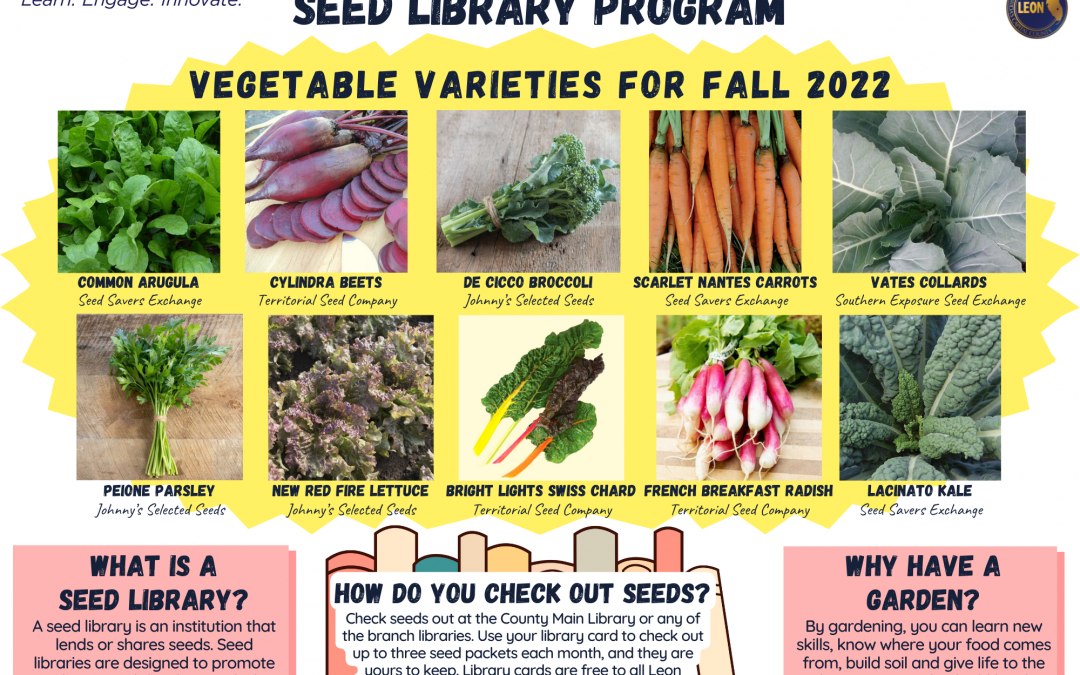
by Molly Jameson | Jul 27, 2022
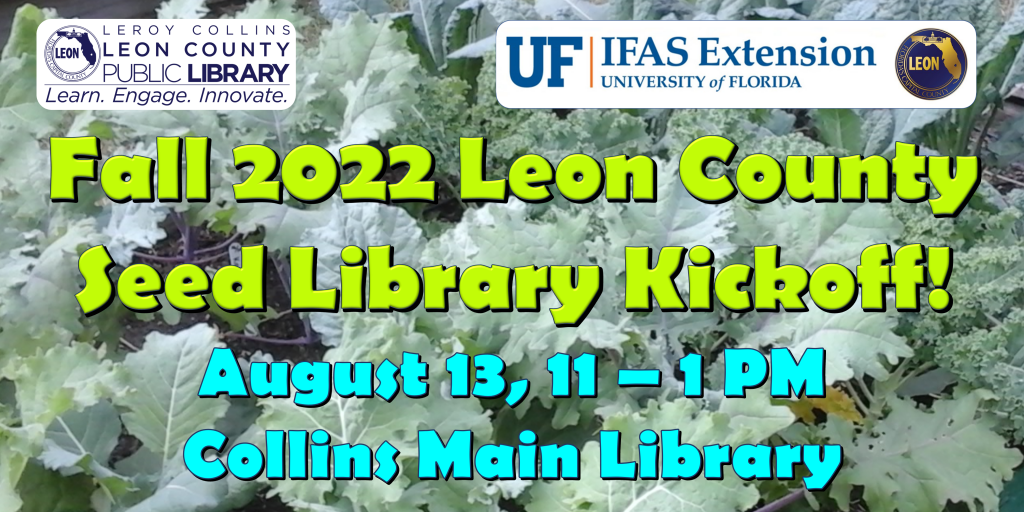
The Fall 2022 Leon County Seed Library Kickoff event starts at 11 a.m. on August 13 at the Collins Main Leon County Library.
To kick off the Fall 2022 Season of the Leon County Seed Library Program, UF/IFAS Extension Leon County will be at the LeRoy Collins Leon County Main Library (200 W. Park Ave.) Program Room on Saturday, August 13, from 11 a.m. to 1 p.m., with information on raised bed gardening, a hands-on seeding activity, an Ask-a-Master-Gardener booth, and a healthy cooking demonstration.
Although we are still in the full swing of summer, gardeners know it is time to start thinking about planning the fall garden. Although pulling weeds and adding fresh compost can wait a little while, gathering seeds for the new season can be something to think about doing now.
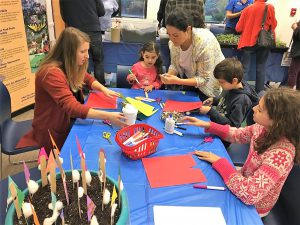
Youth creating garden gnomes at the 4-H station during the 2019 Seed Library Program debut. Photo by UF/IFAS.
If you live in or around Tallahassee, the Leon County Seed Library Program can help jump-start your fall garden. Starting August 13, you can go to any of the seven Leon County libraries to check-out three sample vegetable seed packets per month per library card! The Leon County Master Gardener Volunteers are currently busy labeling and packing each of the seed varieties that will be distributed to the seven libraries.
There will be 10 vegetables varieties this season, including a few varieties that have never been featured in the program. If you like to save seeds from your garden, know that all varieties in the Seed Library Program are open-pollinated (by insects, birds, wind), which means if they are not crossed with another variety, the seeds they produce will grow true to form.
The Fall 2022 selection includes:
- Common Arugula: Deep green with a spicy, peppery, mustard-like flavor
- Cylindra Beets: Heirloom with long cylindrical roots, good for slicing
- De Cicco Broccoli: Central light green head and side shoots to extend season
- Scarlet Nantes Carrots: Sweet, crisp, bright red-orange, seven-inch roots
- Vates Collards: Slow bolting, large blue-green leaves
- Lacinato (Dinosaur) Kale: Cold tolerant, sweet dark green narrow leaves
- New Red Fire Lettuce: Crisp and flavorful, green base with red ruffled leaf edges, bolt resistant
- Peione Parsley: Large flat leaves with sweet flavor
- French Breakfast Radishes: Mild, spicy flavor with a red top and white bottom
- Bright Lights Swiss Chard: Rainbow stems, burgundy and green leaves, very mild
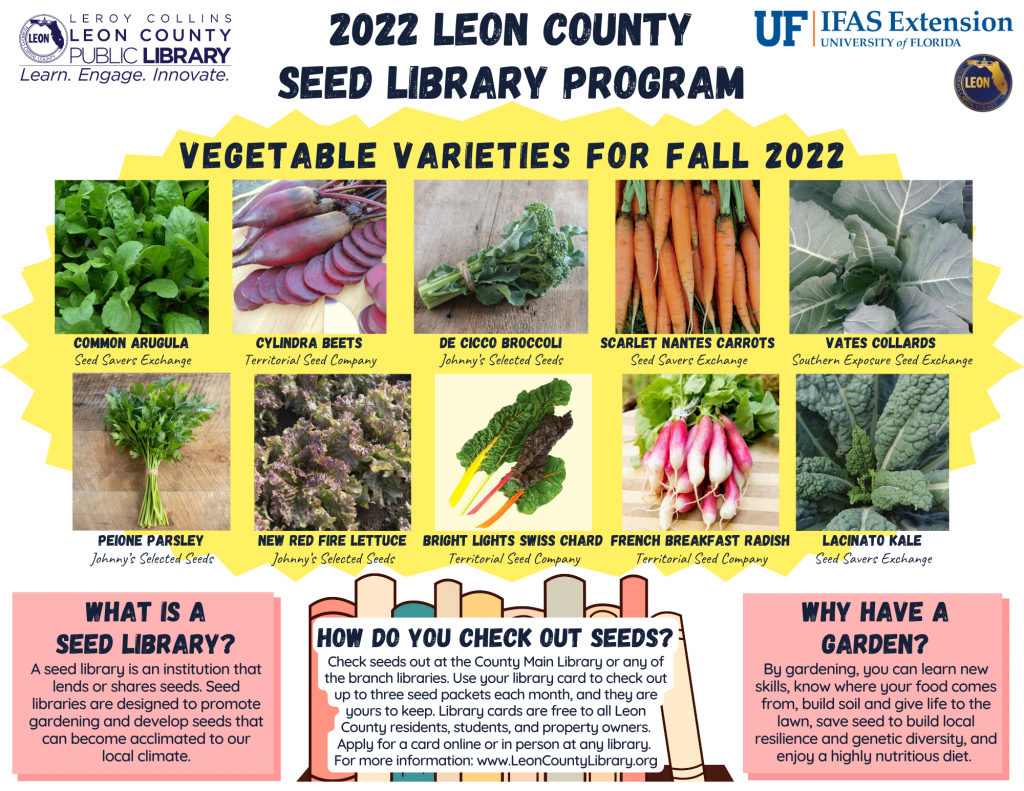
The vegetable varieties available starting August 13 for the Fall 2022 season of the Leon County Seed Library Program. Image by Molly Jameson.
See you at the Leon County Main Library on August 13!
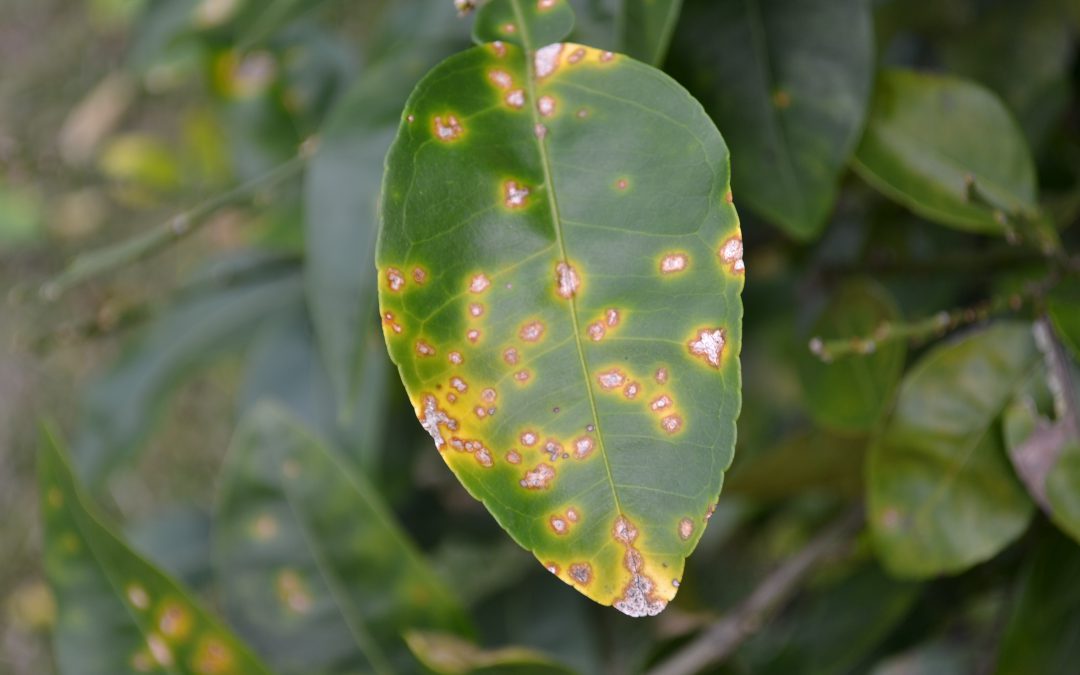
by Beth Bolles | Jul 14, 2022
Citrus canker has made its way to Escambia County and may be more widespread that we realize. This bacterial disease was first seen in Northwest Florida almost 10 years ago in Gulf Breeze. Given time and the ease of transmission of this disease, we are now seeing affected citrus trees in both the east and west portions of Escambia County.
This disease is specific to citrus with grapefruit, lemon, and lime being the most susceptible to infection. The disease can infect all above ground tissues and often enters through natural openings and wounds of leaves, stems, and fruit. If you find an infection early in an isolated area of the tree, you can prune out and double bag the affected tissue for disposal. Often times, the disease is noticed only after a considerable amount of tissue and fruit are affected making it difficult to keep the disease in check.
Since the bacteria is so easily transmitted through rain and wind, it is difficult to prevent movement during our frequent storm events. People can also spread the disease by movement of unregulated citrus trees, on equipment, and even on clothing.
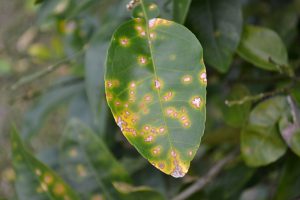
Citrus canker lesions appear on both the upper and lower surfaces of the leaves. Photo by Beth Bolles, UF IFAS Extension Escambia County
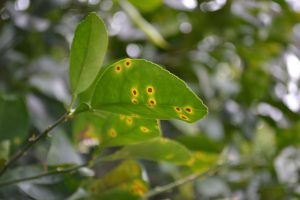
Lower surface with citrus canker. Photo by Beth Bolles, UF IFAS Extension Escambia County
If you suspect a citrus in your landscape has canker, do not bring a sample to your Extension office for identification. Take a photo of plant symptoms of upper and lower leaves, fruits, and stems so that your local Extension educators can assist with identification. The University of Florida publication https://edis.ifas.ufl.edu/publication/PP323 has quality photos and descriptions of the different stages of citrus canker, along with photos of other citrus issues.
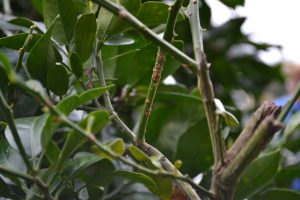
Stem lesions on grapefruit. Photo by Beth Bolles, UF IFAS Extension Escambia County.
The bad new for homeowners is that there is not a treatment to cure citrus canker. If the infection is small (a few leaves or a branch), it may be possible to remove and dispose of the material, following proper sanitation guidelines. Homeowners may also suppress a small infection on fruit by using copper-based fungicides, applied at appropriate intervals. These fungicides only protect plant tissue for a short time by acting as a barrier to infection. See this UF publication for timing of copper sprays for fruit.
Once susceptible citrus are heavily infected, trees will have fruit and leaf drop, along with general decline and dieback. At this stage of the disease, homeowners should strongly consider removing the tree. If it can be burned on site in accordance with local burn laws, that keeps the material contained and may reduce disease transmission. Otherwise, all material should be double bagged and sent to a landfill. Do not compost any material onsite or at local composting facilities. Be sure to follow disinfecting techniques outlined in the University of Florida publication https://edis.ifas.ufl.edu/publication/PP323 for tools, hands, and clothing.
Since management of citrus canker is so difficult, prevention is the best method to protect your tree. If you are considering a citrus, choose a more resistant selection outlined in the UF publication, Table 2. Always purchase a citrus from a certified nursery and follow state guidelines which prohibits all propagation of citrus, unless registered to do so.
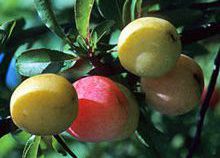
by Ashley Stonecipher | Apr 14, 2022
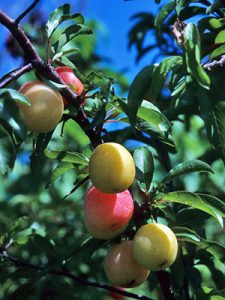
Humans and wildlife find Chickasaw plums delicious. Photo credit: University of Florida/IFAS
There are many trees that can be a great addition to your space that will provide one of the four essential elements food, water, cover, and space. Persimmon thrives in a wide variety of conditions from wet or sandy soil to lowlands or uplands. Deer actively seek out persimmon trees, eating every fruit that is within reach as well as leaves and twigs in the fall and winter. Other wildlife that enjoys the persimmon trees are squirrel, fox, bear, coyote, raccoon, opossum, and various birds including wild turkey. The nectar from flowers provides a significant food resource for pollinator species like bees. These trees are either male or female and at least 3 should be planted together to ensure pollination. Live Oak is a solid tree that many people in this area said survived Hurricane Michael. It provides acorns for food and deep shade. Black Cherry is a host plant for Red-Spotted purple and Eastern Tiger Swallowtail. Bitter fruit matures during the summer to fall and is used for jams, jellies, or liqueurs. Fruits are highly prized by birds and other wildlife. Wild cherry cough syrup is made from the reddish-brown, fragrant and bitter inner bark. Yaupon Holly is another tree that birds and wildlife feed on the berries throughout the winter when food is scarce. Leaves have the highest caffeine content of any other plant native to North America. Some other trees to consider are Basswood, Red Cedar, Florida Hop tree, Elderberry, Slippery Elm, Sassafras, Chickasaw Plums, and the Toothache Tree.
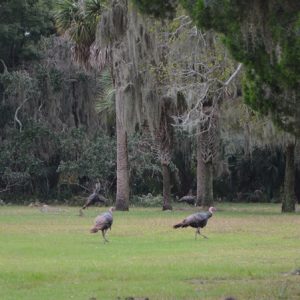
While yard work is important to maintain an attractive lawn, if done successfully, the resident can spend quality time in other pursuits like watching the wildlife from the front porch.
There are many plants that for the longest time I thought were only a nuisance to the everyday gardener, but I truly learned the phrase “Right Plant, Right Place” with these next few plants that I am going to mention. Smilax is a vine with thorns that is nearly impossible to get rid of and gets into our shrubs and landscape. But in the right place smilax provides shelter and food for wildlife. It has a blue-black berry in the spring and provides medicine, food, and dyes for humans. There are 2 species of smilax that are only found in the panhandle. Dog Fennel is native to fields, woodland edges, and roadsides and can be used as an insecticide and antifungal. It has feather like leaves that are very aromatic. Blackberry can grow wild and it is an all-around amazing plant for vitamins. It’s fruit can help fight cancer and decrease cardiovascular disease. Leaves and bark are useful medicinally and leaves can be used as a tea. The last plant I must mention is the Beauty Berry. It is known for its late fall bright purple fruits called drupes, not berries. This plant attracts birds for food in the fall time in North Florida. The drupes can also be used for jams and jellies. Other plants that are great for attracting wildlife are Spiderwort, Dewberry, and Spanish Needle.
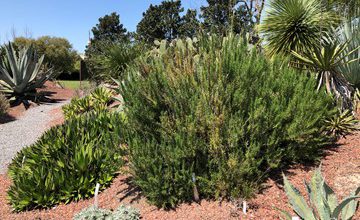
by Gary Knox | Apr 7, 2022
 Written by: Kelly Thomas – Agricultural/Food Scientist II with the University of Florida/IFAS North Florida Research and Education Center
Written by: Kelly Thomas – Agricultural/Food Scientist II with the University of Florida/IFAS North Florida Research and Education Center
Imagine walking out your front door with a cup of coffee to admire your garden. A cucumber vine, ripe with crisp, succulent fruit, has grown so large and sprawling that the white staircase handrail is serving as its trellis. The resulting appearance is a lush green entranceway to the front door. The wall of cucumber leaves stands tall behind burgundy-colored day lilies and stokes asters that are shockingly blue. Nearby, buzzing bees feed on fragrant basil flowers. The plum tree planted near the road is heavy with perfectly round reddish-purple fruit that is almost ready to harvest.
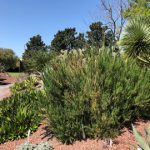
Foxtail rosemary (Rosmarinus officinalis) standing tall in the Dry Garden. Photo Credit: Kelly Thomas – University of Florida/IFAS
You’ve taken up foodscaping, the concept of integrating ornamental plants and edible plants within a traditional landscape. It began during the pandemic with more time spent at home, and the desire to tend to the growth of something. Now, the garden’s bounty has provided groceries, which has proven doubly beneficial as the pandemic continues to disrupt the supply chain and drive up the cost of food.
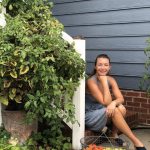
Brie Arthur sitting on steps next to tomato vines. Photo Credit: Brie Arthur
The concept of foodscaping is not new. In fact, foodscaping has been around in some form or fashion for centuries. In the early 2000’s, Sydney Park Brown, now a UF/IFAS emeritus associate professor, published an EDIS document titled ‘Edible Landscaping.’ Brown describes how edible landscaping allows people to create a multi-functional landscape that increases food security, reduces food costs, and provides fun and exercise for the family, along with other benefits. Foodscaping, another term for edible landscaping, really took off as a movement during the 2008 economic recession.
Around that time, a horticulturist named Brie Arthur wanted to grow vegetables to save money on groceries. However, the restrictions placed by her H.O.A. forced her to venture away from a standard vegetable garden. Within six months, Arthur had won ‘Yard of the Year,’ proving that edible plants can also be aesthetically pleasing, especially when incorporated into a landscape design. Now, her one-acre lot in North Carolina provides almost 70% of what she and her husband consume. Her garden produces food year-round, everything from sweet potatoes, garlic, and pumpkins to edible flowers like dahlias. She even grows sesame and barley, or as she calls it, “future-beer.”
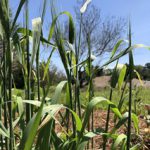
Utrecht blue wheat beginning to form seed heads. Photo Credit: Kelly Thomas – University of Florida/IFAS
Brie Arthur is a charismatic speaker and bestselling author. She continues to be a major proponent of the foodscape movement, inspiring others to realize their landscape’s full potential. Arthur came and gave an energetic and action-packed presentation on foodscaping at UF/IFAS North Florida Research and Education Center (NFREC) in Quincy, FL on March 5th, 2022. Before the workshop, which was titled ‘A New Era in Foodscaping’ adjourned, participants toured edible displays in Gardens of the Big Bend (GBB), a botanical garden located at the UF/IFAS NFREC. Tour participants walked by golden and red-colored amaranth plants bordered by carrots in the Discovery Garden. Waist-high rosemary plants held their own next to agaves and other desert giants in the Dry Garden.
For more information and advice on foodscaping, check out Brie’s YouTube channel, Brie the Plant Lady. Photos of her garden in North Carolina can be found on her blog. University of Florida resources on edible landscaping/foodscaping can be found via EDIS. And come visit Gardens of the Big Bend in Quincy to view edible garden displays in person!
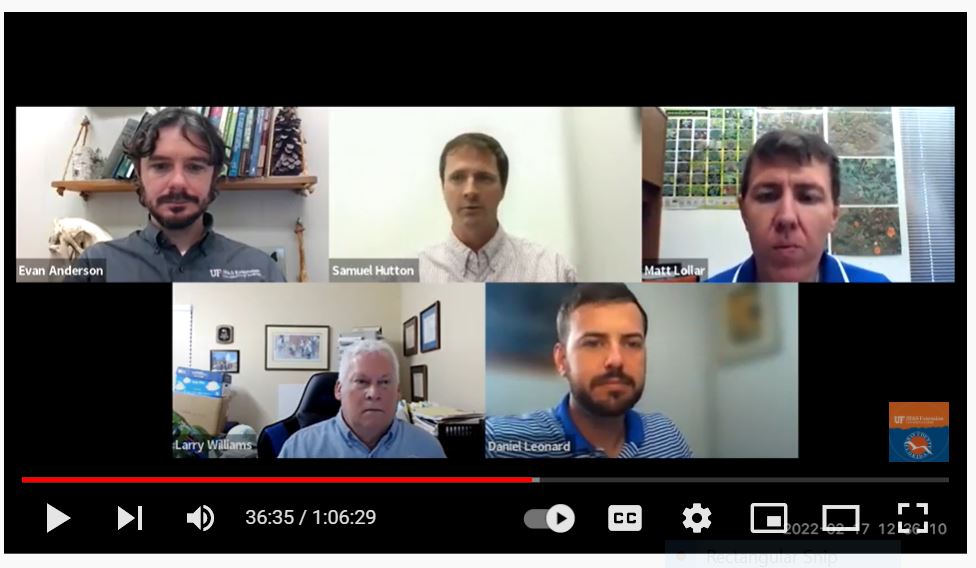
by Beth Bolles | Mar 31, 2022
The February Q&A on Growing Tomatoes offered valuable tips for the home gardener to be successful with tomatoes in 2022. Below are the reference materials related to specific questions that were asked.
Let’s start out with the panels favorite tomatoes including hybrids and heirlooms.
Evan: Supersweet 100, Sungold
Larry: Amelia, Brandywine, Cherokee Purple
Sam: Better Boy, Tasti Lee, Sweethearts
Matt: Mountain Magic, Mountain Rouge, Bella Rosa
Daniel: Black cherry and Big Beef
Why are tomatoes red?
Can we grow tomatoes year around?
I have very sandy/loamy soil. Do I have a chance at successfully growing tomatoes?
What is the best time to start tomatoes in North Florida?
If one grows in raised beds, should one rotate where in the bed tomatoes are planted?
If you plant tomatoes in mid-March, how long will they continue to produce fruit?
I’m thinking of trying hydroponic gardening on a few tomato plants this year. Do you think a 50/50 mix of perlite and vermiculite would be a good approach for a soil medium? I’d like to use 5-gallon buckets and keep maintenance to a minimum.
What tomatoes grow best in inland Bay County? Coastal vs inland considerations.
Best type for all day sun (speak to tomatoes light requirements)
What is the best tomato variety for Northwest Florida? I need one go-to variety for both regular tomatoes and cherry type.
How to get more tomatoes, less vine?
My tomatoes get black on the bottom and rot. What causes this and how do I prevent it?
Do tomatoes need a lot of water?
Why do my tomatoes split/burst/crack while on the vine?
Any suggestions for how to handle especially wet years like last summer? My tomatoes really suffered.
How do I keep the leaves from getting dark spots that spread and kills foliage?
How do you string tomatoes vine to a stake?
What causes catfacing?
Every year I’m having trouble with an amazing amount of insect infestations on my tomatoes & peppers I grow in containers. What can I do to help?
How do marigolds (which variety) or basil aid tomatoes?
Please talk about save tomato seeds to grow. Some can’t afford to buy potted tomato plants.
Can you add nutrients into the soil from last year’s tomatoes to reuse again this year?
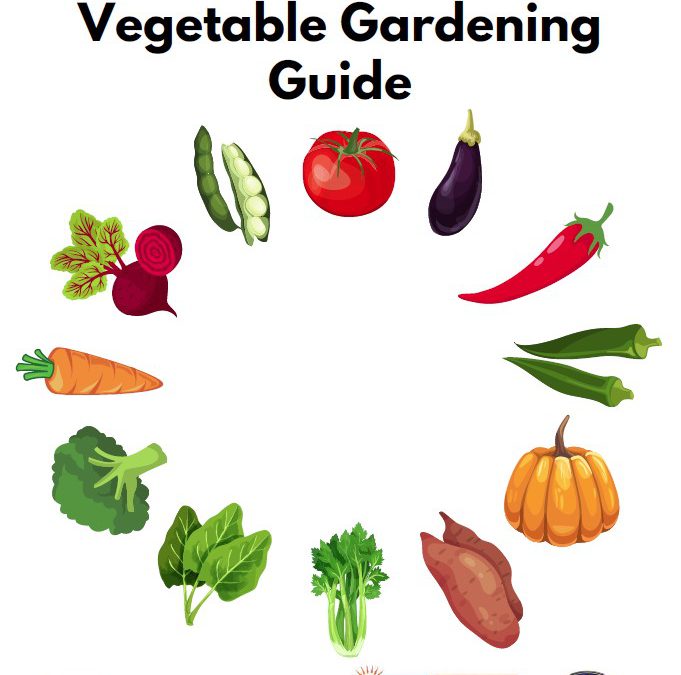
by Molly Jameson | Oct 28, 2021
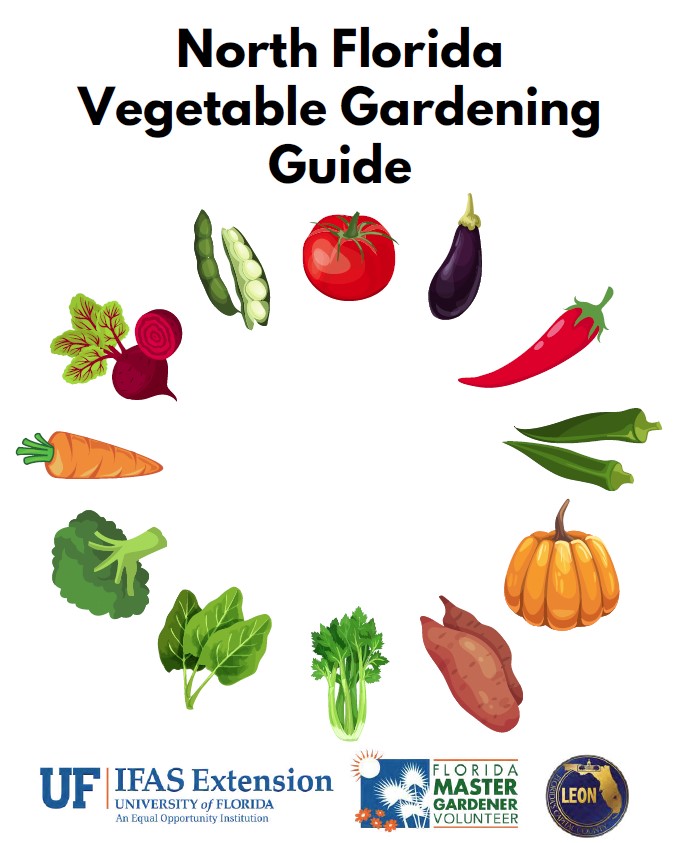
As you garden this fall, check out the North Florida Vegetable Gardening Guide, compiled by UF/IFAS Leon County Extension.
Getting into vegetable gardening, but don’t know where to start?
Even experienced gardeners know there’s always more to learn. To help both beginners and advanced gardeners find answers to their questions, the UF/IFAS Leon County Extension Office put together the North Florida Vegetable Gardening Guide. It incorporates multiple resources, including articles, planting calendars, photos, and UF/IFAS EDIS publications.
The North Florida Vegetable Gardening Guide covers the many aspects of vegetable gardening, including how to get started, site selection, insects and biodiversity in the garden, soil testing, composting, cover crops in the garden, irrigation, and more.
You can click here to view the digital version of the guidebook. We also have physical copies of the guide available at the UF/IFAS Leon County Extension Office (615 Paul Russell Rd., Tallahassee, FL 32301).
Happy fall gardening!













 Written by: Kelly Thomas – Agricultural/Food Scientist II with the University of Florida/IFAS North Florida Research and Education Center
Written by: Kelly Thomas – Agricultural/Food Scientist II with the University of Florida/IFAS North Florida Research and Education Center




